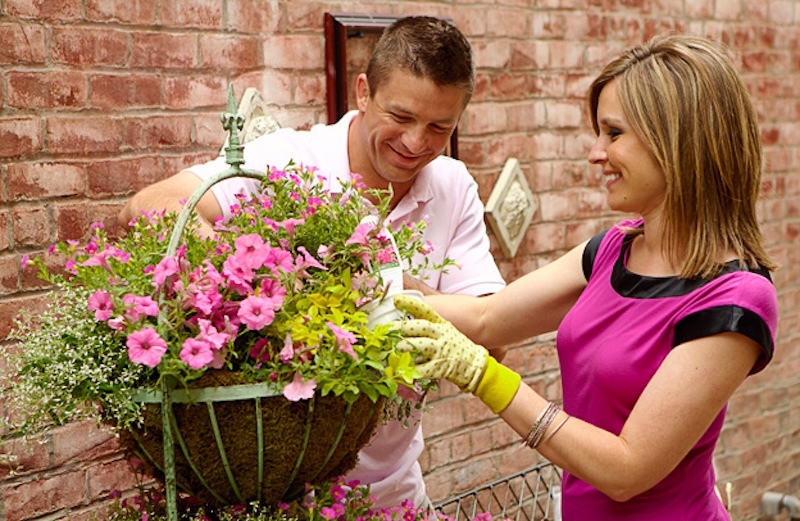Petunias are a common sight in beds, borders, and hanging baskets, and these summertime favorites bloom from spring through the fall. As long as the temperature stays warm, Petunias may continue to bloom in warm growing zones, like 9 through 11. Petunias are grown for their abundant and vibrant flowers, so it can be upsetting if the plant is not blooming, and it can be incredibly confusing if the plant appears healthy, but there are no blooms. Find out why your Petunias are not blooming and how to fix the issue so your plant will be dotted with beautiful flowers.

Common Reasons Why Petunias Aren’t Blooming
-
Not Enough Sunlight
Petunias need about 6 hours of direct sunlight a day to bloom. Anything less and existing buds may not open, and new buds will not even form. Not enough sunlight is an easy fix, and you can either move the container or basket or transplant the Petunias to a sunnier spot.
-
Improper Nutrient Balance
Typically, Petunias prefer a balanced liquid fertilizer, and if the plant receives an unbalanced diet, especially if nitrogen is abundant, flowers are not very likely. Water the plant to flush the soil of the remaining fertilizer to avoid over-feeding the plant. Feed the plants again in a couple of days using a balanced fertilizer, like 8-8-8 or a fertilizer high in phosphorus.
-
Too Much Overgrowth
Plants with many overgrowths or a scraggly or leggy appearance may not bloom. Prune the plants to remove dead, damaged, or nonproductive growth. New growth will emerge in a few days, and flower buds should appear a couple of days later.
-
Root Bound
Small or overcrowded containers will prevent the roots from spreading out, and once the roots are limited, the rest of the plant will follow suit—transplant Petunias to thin them out and give each plant more room to grow.
Does Pruning Petunias Help Them Bloom
Pruning can help Petunias bloom. Cutting back scraggly, unkempt growth will encourage new growth, and flowers will grow from the new growth. You can periodically trim the plant throughout the growing season if it looks overgrown or trim it back every 2 weeks to consistently promote new foliage and flowers.
Does Fertilizing Petunias Help Them Bloom
Feeding Petunias a well-balanced diet can promote blooms. A plant that has not been fertilized may not bloom, and this can easily be addressed by feeding the plant using a balanced liquid fertilizer, like an 8-8-8.
An unbalanced diet could also be behind non-blooming Petunias. You want to avoid over-feeding the plant, so water the plant to flush the remaining fertilizer if you have fed the Petunia in the past 2 weeks. Use a balanced liquid fertilizer the next time you feed or use food high in phosphorus or bone meal.
Get Petunias To Produce More Blooms
Routine pruning is generally the easiest way to keep Petunias covered in blooms. Check out the plant to remove dead or damaged growth and gently pluck spent blooms off the stems. Nip a few inches off the ends of the stems every 2 to 3 weeks to consistently promote new growth and more regular blooms.

You can get Petunias to bloom again by sticking to a regular fertilizing schedule. Petunias are heavy feeders and fertilize every 2 weeks for plants in the ground or once a week for potted plants. Use a balanced liquid fertilizer to keep the plant happy, healthy, and decked out in flowers.
Why Aren’t Petunias Blooming
- Too little direct sunlight
- Not fertilizing or not feeding enough phosphorus
- Overgrown, leggy plant
- Root bound
 |
Author Alison Cotsonas - Published 12-16-2021 |
